MRRL Hall of Fame
DAVE KALMBACH
- Details
- Category: Inductees
- Created: Sunday, 29 January 2012 09:33
- Written by Gary Johnson
The decade of the 1960’s was a particularly rich one in the history of Michigan rock and roll. One of the most important genres during that time period was ‘garage rock’, a name given to the sounds produced by the hundreds of teen bands that emerged all around the state in the wake of the British Invasion. Dave Kalmbach’s Great Lakes Recording Studio played a very important role in the garage rock movement by offering teen bands the chance to record a 45 that could be sold off the bandstand or at local record shops, given to potential employers, and even get airplay on one or more of the many AM rock and roll radio stations that dotted the state.
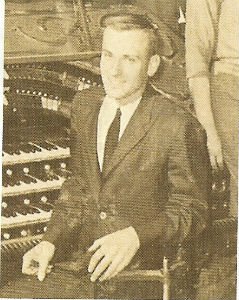 Dave Kalmbach
Dave Kalmbach
Kalmbach was a young musician and electronics buff who was also a recording artist himself, waxing two instrumental singles by Dave and The Shadows, “Blue Dawn” b/w “Here After” and “At the Fair” b/w “Dancing Cheek To Cheek”, at the famed Chess Studio in Chicago and having them issued on the subsidiary Check-Mate label in 1962. It was at the Chess Studio that Kalmbach was introduced to the Leslie organ speaker. It used the Doppler Effect to get the vibrato in the recording, and Kalmbach purchased one after he returned to East Grand Rapids and employed it on future recordings.
Kalmbach’s group used the Leslie on the first single released on his own Fenton label shortly thereafter, the instrumentals “Faith” b/w “Playboy”. Kalmbach had opened his recording studio at the Our Theatre in Grand Rapids, Michigan, but by 1964 he would move his operation to another movie theatre in nearby Sparta, Michigan.
Frank Uhle explained how Kalmbach’s business worked in The Fenton Sound. “The Fenton business model was pay-as-you-go, with the company providing recording and mastering services for a fee. The records were manufactured out of state at first and then at the American Record Pressing plant in Owosso, Michigan”. A.R.P. had pressed Berry Gordy’s first 45’s on his Tamla label in 1959, and by the middle of the 60’s the plant was pressing records for all of his Motown labels.
Uhle also wrote; “Over the span of a half-dozen years, the Fenton operation would issue as many as one hundred 45s and a handful of albums. In addition to bands from the Grand Rapids metro area, and small nearby towns like Cedar Springs and Sparta itself, artists recorded by Kalmbach came from throughout Western Michigan, the Lansing metropolitan area in the center of the state; Traverse City to the north; and the Flint/Bay City area on its east side”.
“The majority of records released on Fenton and sister label Great Lakes (as well as affiliated custom imprints such as Sound of the Sceen, Dubonay, Vark, Swade etc.) were by teenage garage bands, but the studio also recorded folk singers, country bands, a poet, and lounge acts. These latter acts accounted for three of the label’s four known LPs, one of which featured young guitarist Danny Gatton”.
Uhle went on to explain; “Within the garage rock genre Fenton produced a surprisingly large number of memorable recordings, including several that were huge hits on local radio. In contrast with more urban regional scenes like Chicago or Detroit, few of the bands appear to have been heavily influenced by blues or soul music, with their sound generally bearing witness to the members’ relatively uncomplicated suburban or small-town backgrounds. Musical inspiration typically came from the melodic, dynamic styles of groups like The Beatles, Byrds, Beach Boys, and Paul Revere and the Raiders, which, when combined with teenage exuberance and a dose of hormonally-induced male aggression, resulted in the classic Fenton sound”.
Dave Kalmbach was born and raised in the affluent suburb of East Grand Rapids. His father was a partner in Wheeler-Van Label, a Grand Rapids company that did printing for big clients like Wrigley’s chewing gum out of Chicago. The Kalmbach family lived in a comfortable home on Maxwell Street and had enough money to easily support Dave’s early interest in both music and electronics.  Former Kalmbach family home
Former Kalmbach family home
Dave Kalmbach’s first brush with fame came at the age of 14 as a result of a news article in the Grand Rapids Press about the electric-powered wooden car he built with a friend and drove to East Grand Rapids High School. He also developed his own pirate radio station while still in high school. It was very popular among teens in East Grand Rapids during the late 50’s until the FCC stepped in and shut Kalmbach down.
Kalmbach had taken music lessons from an early age and was an accomplished keyboard player. He formed his first band, Dave and the Shadows while still in high school. Mel Plumley, Jim Wilson, Rick Sutherland, Larry Cook, and Tom Marvin were members of the Shadows, which was strictly an instrumental combo at this point in time. Jerry Lewis and Pat Quillan also played in the band at one time or another. According to both Tom Marvin and Dave's longtime friend Mick Noonan, Kalmbach set up and maintained a small studio in his parent's basement before he began recording at the Our Theatre, located on Leonard Street in Grand Rapids.
Tom Marvin remembers that there weren’t that many bands around at that time, but the competition was fierce. “There was no love lost among the groups – everyone thought they were better than everyone else – including the Kingtones”. Dave and the Shadows first Fenton single made use of the Paige pipe organ, and “Playboy” got airplay on WGRD (Kalmbach was the head engineer at the station) leading to bookings at numerous DJ dances. 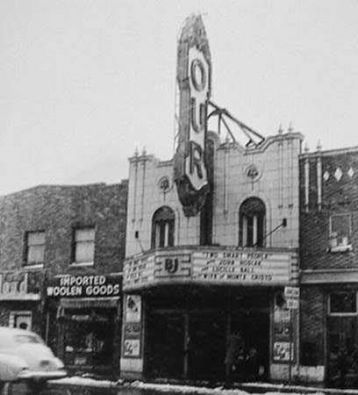 Our Theatre
Our Theatre
Kalmbach first became fascinated with the Paige pipe organ while doing upkeep on the instrument while working as the manager of the Our Theatre. He also started the first version of the Great Lakes Recording Studio there. The Our Theatre had a basement where Dave set up his recording gear. Kalmbach didn’t build any of his equipment, but he did put everything together. His family helped him purchase the best electronic apparatus on the market at that time, an Ampex 351 tape recorder and Altec condenser microphones.
The pipe organ was the band's gimmick on its recordings, but Kalmbach used his Leslie organ at the live gigs. Tom Marvin says that Dave and the Shadows had the only fully integrated sound system of any band in the Grand Rapids area; everyone else had their own individual amps. This put the band in a class by themselves, and as a result, they were invited to open for Bobby Vee at his appearance at the Stardust Drive-In in Grand Rapids in the early 60’s.
They also played at the Club Ponytail in Petoskey. It was an old nightclub that was used as a speakeasy and gambling joint during Prohibition, but by the 1960’s it was turned into one of the most popular teen clubs in northern Michigan, booking both young Michigan bands as well as nationally known acts like The Beach Boys, Del Shannon, and The Four Tops.
In late 1962, vocalist Sue Greiner joined Dave and the Shadows . She had previously sang with the Eschelons, another Grand Rapids band. Greiner recorded an early Fenton single, "Go Tell It On The Mountain" backed with her own composition of "Love In My Eyes" at the Our Theatre. Her 45 was released under the name Sue and the Dynamics in 1963.
Besides recording material with Dave and the Shadows, Greiner provided the vocals on radio commercials that Kalmbach recorded for a number of businesses in and around Grand Rapids at the Our Theatre. Sue Greiner remembers doing several different commercials, including one for Archway Cookies that she believes went national. Sue said she was not paid any money for the commercial, which she also laughingly claimed was pretty typical of her days in the band. When Kalmbach came up with the idea to do a Christmas album with Dave and the Shadows, it was Greiner who did all the singing, even overdubbing her vocals on "O Holy Night".
It was unusual for a local band to record an album at this time. One side was made up of traditional Christmas songs while the other side had commercial tunes including their cover of “Jingle Bell Rock” and original compositions such as “Theme To The Our”, a tribute to the theatre where the album was recorded. 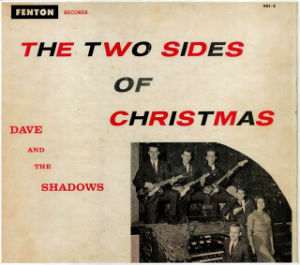 Dave and The Shadows LP
Dave and The Shadows LP
Tom Marvin left Dave and the Shadows shortly before "The Two Sides Of Christmas" was completed, thereby incurring the wrath of Kalmbach’s mother, who was in charge of the band’s finances. Jack Hazewinkel of The Eschelons was brought in to play bass on the remaining tracks, and, in a fit of pique, Mrs. Kalmbach made sure that Marvin’s name was removed from the album credits.
It’s not certain why Kalmbach moved his operation out of the Our Theatre, and there is some disagreement about what happened next with the theatre's pipe organ. Fitz Green claims that Kalmbach purchased the Paige pipe organ when he left, and installed it in the basement of his parent’s home in East Grand Rapids; and that he operated his Great Lakes Recording Studio in the basement until he moved his business to Sparta in 1964.
According to Green, the pipe organ was everywhere in the basement. The volume of the massive instrument actually caused cracks in the walls. Kalmbach also had a Hammond B-3 and his Leslie organ down there. In a little room or booth, he had a mastering machine, and a two-track recording device. The recording space was very small, but Kalmbach also employed several reel-to-reel tape recorders to produce echo effects.
Green had been the Kalmbach’s paper boy back in 1959 and 1960, and was a 15-year-old guitarist in 1963 when he and his band, The Renegades IV, recorded their first single in the basement studio. The instrumental pairing of “Greensleeves” b/w “Autumn Night” would be just the fourth single released on the Fenton label (the others being Dave and the Shadows, J.D. and the Dynamics (featuring Kalmbach on organ), and the Rhythm Rockers.
Jack Hazewinkel, on the other hand, claims that he helped Kalmbach move the pipe organ directly to Sparta from the Our Theatre. In an interview, Sue (Greiner) Fischer said she was at the Our Theatre for a practice session with Dave and the Shadows when the guys loaded the pipe organ to take it to his Sparta studio. Mick Noonan also supports this scenario. If that is the case, the pipe organ in the basement was a different instrument. Green, Noonan, (Greiner) Fischer, and Hazewinkel are all in agreement, however, that Kalmbach installed the Paige pipe organ in the Sparta Theatre in 1964. 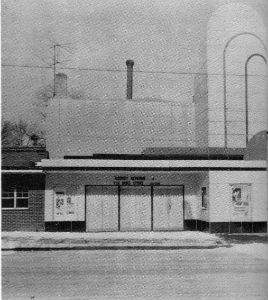 Sparta Theatre
Sparta Theatre
That year, Kalmbach and his significant other, Bruce Smith, had formed a business partnership and purchased the Sparta Theatre. They set up both Fenton Records and the Great Lakes Recording Studio inside the building and used it as a recording facility when films were not being shown. Kalmbach also became the first person in the state of Michigan to obtain a franchise to sell the highly regarded Sunn amplifiers from his studio in Sparta. Powerful enough to play larger concert halls yet still produce high quality sound, many of the amps were purchased by the young bands that recorded with Kalmbach, such as Tonto and The Renegades who bought three.
Fitz Green and his band, now renamed The Renegades V, recorded their second single in Sparta in 1964. “Wine, Wine, Wine” b/w “Love And Fury” was released on the Duboney label, the first of Kalmbach’s productions not to be issued on Fenton. Green remembers that they recorded in a lower area on the floor between the seats and the theatre stage with the singer off to the side. Kalmbach installed his recording equipment in the projection booth.
Green also revealed that Kalmbach would often ask the drummer for his leather wallet and then place it on the snare drum to cut down on the rattling sound. He also didn’t like bass drums, and they were often mixed down in his recordings.
The Renegades V’s “Wine, Wine, Wine” got local airplay as did all of Kalmbach’s recordings. His Fenton operation was one of only a small number of studios in town, and he was very well-connected with radio stations because of his recordings and performances with Dave and the Shadows and also because of his job at WGRD.
Kalmbach started double tracking vocals at Sparta. The first record to use this approach was “Nothing I Can Do”, the first single by The Sheffields, a band from Holland, Michigan, with a sound similar to The Searchers. The technique was also used on “You Treat Me Bad” by The JuJus, a Grand Rapids band who recorded with Kalmbach in 1965. The song would become Fenton’s first big local hit, reaching # 2 on station WLAV and leading to an appearance by the band on the TV dance program McKay’s Show, as well as gigs before screaming female fans tearing at their uniforms and hair in a display that could only be described as “JuJu-mania”. 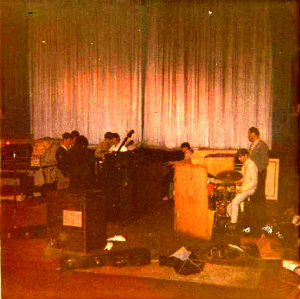 Fenton recording session Tonto & The Renegades
Fenton recording session Tonto & The Renegades
Using two AMPEX 602 stereo recorders and a steel plate EMT reverb system, Kalmbach recorded a great number of teen garage band singles at the Great Lakes Studio in Sparta from 1964 to the end of the decade. According to Frank Uhle, Kalmbach “ran a very laid-back operation that respected the needs of his young musicians”. Kim Weighous of Grand Rapids’ Pedestrians, remembered that Kalmbach sat through nearly 50 takes of “Think Twice” before getting one they were all satisfied with. The record went on to become the # 1 song of 1966 in Grand Rapids.
The list of Michigan garage bands that benefitted from Kalmbach’s guiding hand is long and included teens from around the state. The Beaux Jens and Tonto & The Renegades both hailed from Grand Ledge, located near Lansing. Both groups released singles on the Sound Of The Sceen vanity label, because both bands played regularly at the Sceen teen club located west of their hometown.
Tonto & The Renegades first single, “Little Boy Blue” was voted a Legendary Michigan Song in 2008, the first of Kalmbach’s recordings to be so honored. Both sides of the group’s second single, “The Easy Way Out” b/w “Anytime You Want Some Lovin’” were written and produced by Dick Wagner in the Sparta studio with Kalmbach doing the engineering. Both of these recordings were voted Legendary Michigan songs in 2012.
Grand Rapids provided Kalmbach with The Barons, The Fugitives, Lyn & the Invaders, Peter & the Prophets, along with the highly successful Soulbenders whose cover of “Seven and Seven Is” was picked up for national distribution by Mala Records in early 1968. In addition, Kalmbach’s hometown of East Grand Rapids produced the Quests who recorded one of Fenton’s greatest two-sided 45s, “Shadows in the Night” b/w “Tempted”.
Muskegon bands that recorded in Sparta included The Aarvarks, The Blokes, 9th Street Market, and The Pentagons. The Lansing bands who worked with Kalmbach were The Chancellors, The Saharas, and The Plagues, whose lead singer was future Hollywood film director William Malone.
Tiny cities like Fennville produced The Chentelles, Lowell - The Headhunters, Cedar Springs - The Black Watch, and Sparta -The Jades. The Mussies came from South Haven, The Legends from Holland, Poor Boy’s Pride from Grand Haven, The Penetraters from Traverse City, The Cherry Slush and Bed Of Roses hailed from Saginaw, and The Blues Company came from Bay City.
Perhaps the most renowned Michigan band to record at Sparta was The Woolies from Lansing. They recorded an early version of "Who Do You Love" with Kalmbach before re-recording the song at United Sound in Hollywood and reaching # 95 on Billboard's Hot 100 in early 1967. In addition, Bob Baldori, the Woolies' keyboard player, produced and recorded "You Haven't Seen My Love" by Lansing's Danny Hernandez & The Ones at the Great Lakes Recording Studio in Sparta. The single was first released on both the Spirit and Fenton labels before it was picked up by Motown for national distribution. Baldori claims that it marked the first time that Motown ever made a record deal with an outside producer.
All of the above bands recorded memorable singles with Dave Kalmbach, but as the teen band scene faded away in the late 1960’s, so did the Great Lakes Recording Studio, which closed its doors by the end of the decade. Unfortunately, Kalmbach lost control of the master recordings at some point. Besides the singles that were released, there are reportedly unreleased demos and outtakes on the tapes that have yet to see the light of day.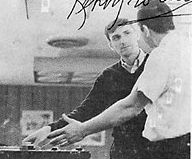 Dave Kalmbach in the studio
Dave Kalmbach in the studio
Not a great deal is known of Kalmbach’s post-Sparta career. After he closed down his studio, Kalmbach moved along with his pipe organ to Detroit to work in the Artie Fields Studio. He and the organ later moved to Toronto, before purchasing the Historic Marietta Theatre in Marietta, Pennsylvania.
Kalmbach owned and operated the Marietta Theatre for over 25 years. He enjoyed restorng pipe organs, including the one in his theatre that was played during silent movies. He also established a new recording business in the facility.
In later years, Kalmbach was stricken with multiple sclerosis, a serious progressive disease of the central nervous system. He was eventually moved to the Conestoga View Nursing and Rehabilitation facility in Pennsylvania. Sadly, Dave Kalmbach passed away there at the age of 77 on August 12, 2017.
Because of his many contributions to the state’s musical legacy, Dave Kalmbach was selected as an Honorary Inductee to the Michigan Rock and Roll Legends online Hall of Fame in 2011.
MRRL Hall of Fame: https://www.michiganrockandrolllegends.com/mrrl-hall-of-fame
Video: "You Haven't Seen My Love" by Danny Hernandez & The Ones https://www.youtube.com/watch?v=Qt_7h3aHrH8
Dr. J Recommends:
"Scream Loud!!! The Fenton Story" 2CD. Way Back Records. Marktgasse 17, D-72070 Tubingen, Germany. 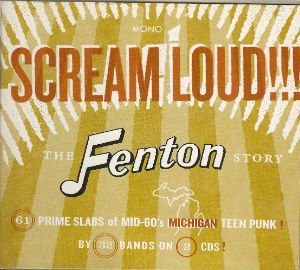
This is simply one of the best garage rock compilations out there. Put together from the 45 collection of Mark "Bosshoss" Taylor and featuring excellent sound quality, this set of 61 songs from 32 different bands gives the listener a pretty complete picture of what was going down at Dave Kalmbach's Great Lakes Recording Studio in Sparta, Michigan. In addition, Frank Uhle's excellent liner notes do a great job of explaining Kalmbach's Fenton operation and provide the reader with concise biographies of each band and the records they made.
